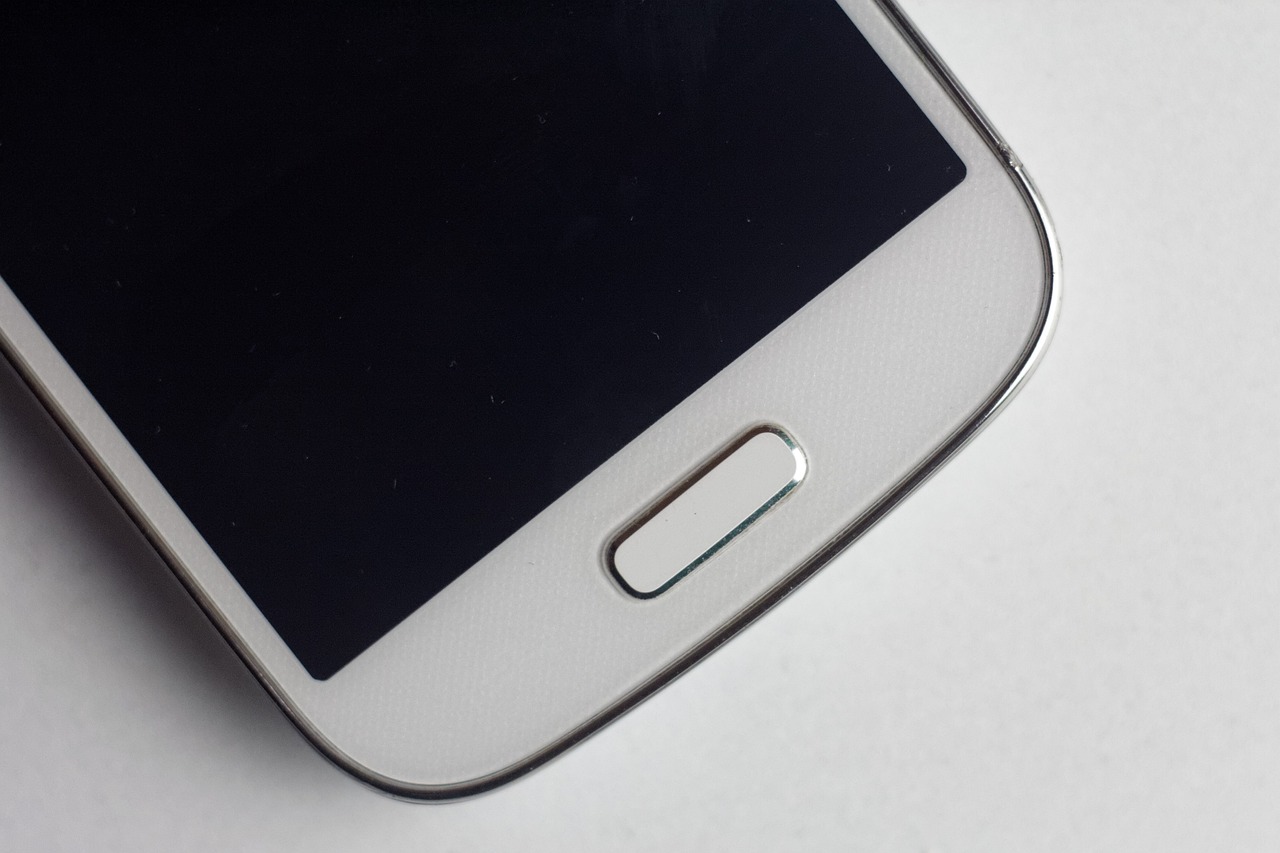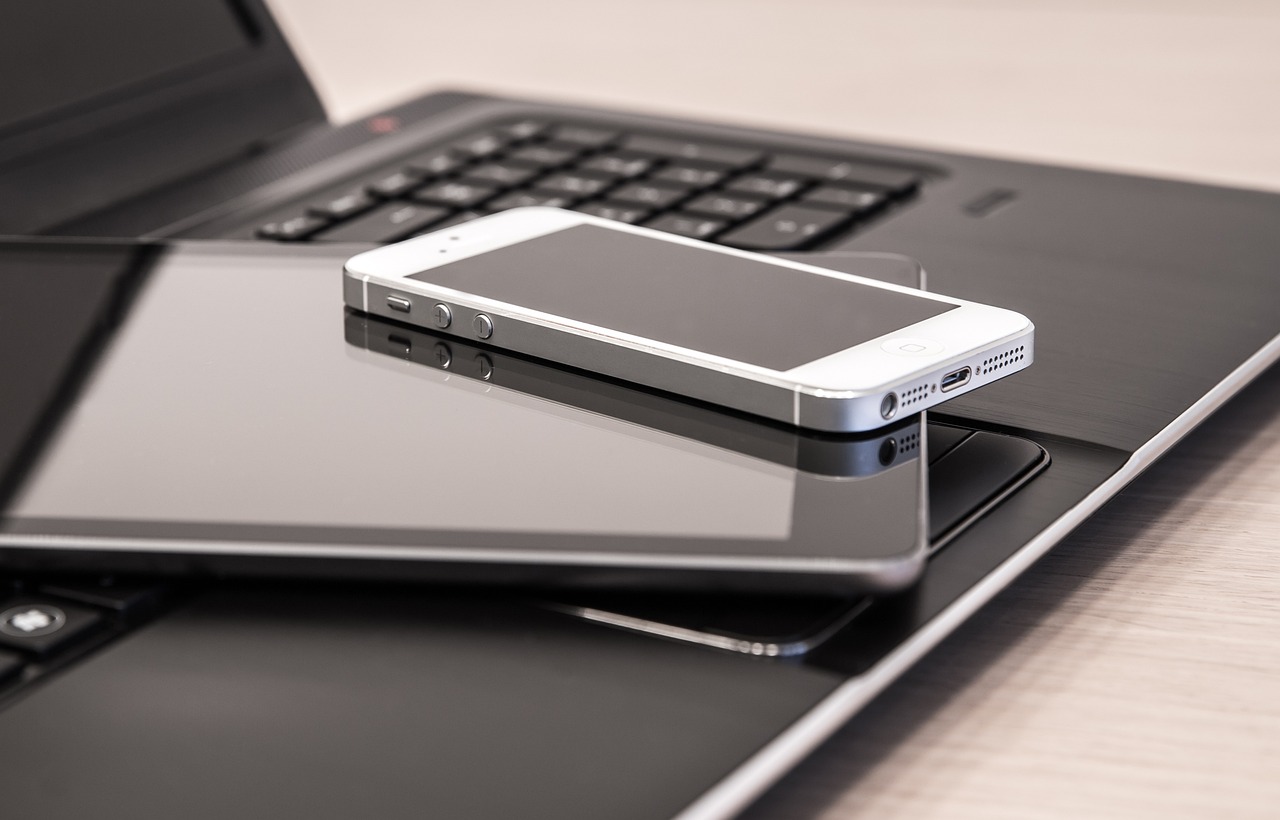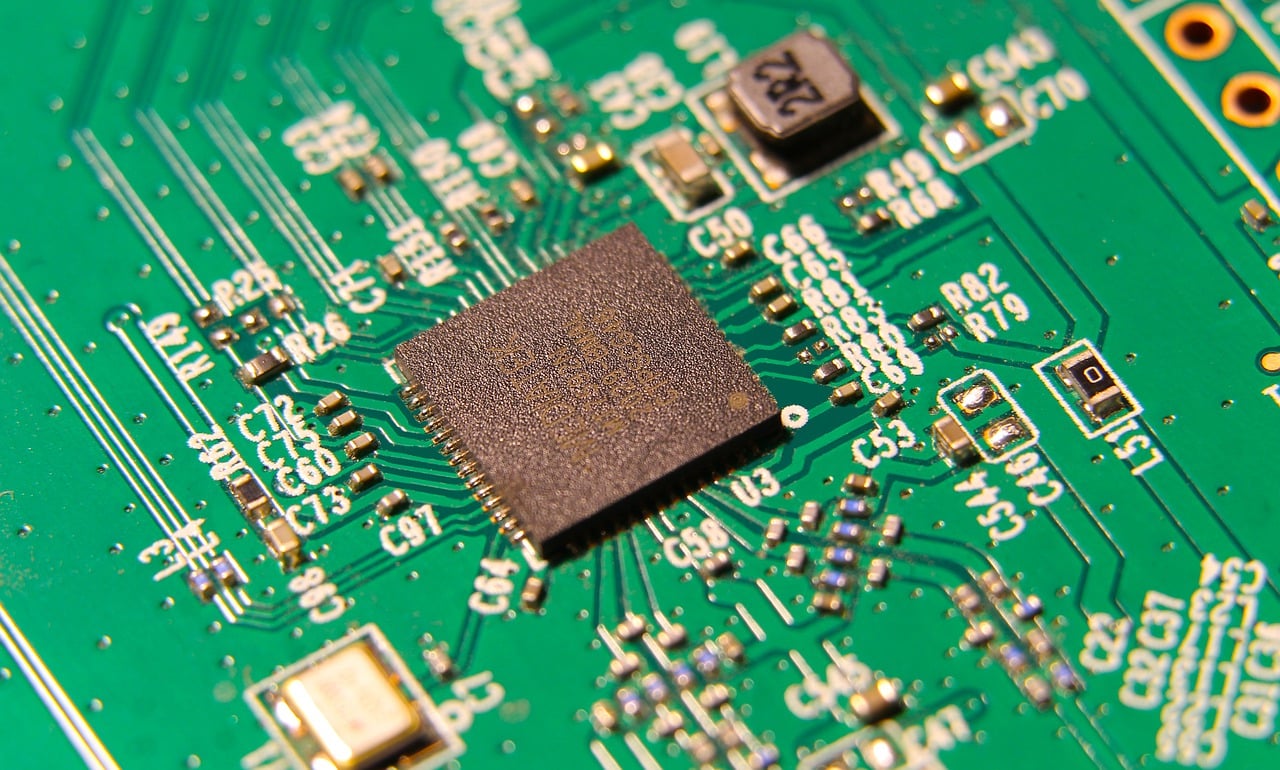The Environmental Impact of Cell Phone Waste
The rapid advancement of technology has undeniably transformed our lives, but it has also led to a significant challenge: cell phone waste. As our society becomes increasingly reliant on smartphones, the volume of discarded devices has escalated at an alarming rate. Every year, millions of cell phones are tossed aside, contributing to a growing mountain of electronic waste. This article dives deep into the pressing environmental concerns surrounding cell phone waste, including pollution, resource depletion, and the critical importance of recycling and responsible disposal practices.
To put things into perspective, did you know that over 1.5 billion smartphones are sold globally each year? With such staggering figures, it’s no wonder that discarded devices are piling up in landfills, often ending up in developing countries where regulations are lax. The consequences of this waste are dire, affecting not just the environment but also human health. When cell phones are improperly disposed of, the materials within them can leach into the soil and water, causing pollution that can take decades to rectify.
Moreover, the environmental impact doesn't stop at pollution. The production of cell phones requires the extraction of valuable natural resources, such as rare earth metals, which are often mined under conditions that devastate local ecosystems. This depletion of resources raises serious questions about sustainability and how we can mitigate the negative effects of our high-tech lifestyle. In essence, the way we handle cell phone waste today will determine the health of our planet for generations to come.
As we delve further into this topic, we will explore the various hazardous materials found in cell phones, the recycling processes available, and the numerous initiatives aimed at promoting responsible disposal. Each of these elements plays a crucial role in understanding the overall impact of cell phone waste on our environment. So, let’s embark on this journey to uncover the truth about cell phone waste and what we can do to make a difference.

The Scale of Cell Phone Waste
Cell phone waste has become a pressing issue in our modern world, with millions of devices being discarded every year. In fact, according to recent statistics, approximately 1.5 billion smartphones are sold globally each year, and a staggering discard rate of 20-30% is observed within just a few years of purchase. This means that billions of devices are piling up in landfills, contributing to a significant environmental crisis. The sheer volume of electronic waste (e-waste) generated by cell phones is alarming, as it not only occupies valuable space but also poses serious threats to our planet.
To illustrate the magnitude of the problem, consider this: if we were to stack the discarded cell phones from just one year, it could reach the height of the Empire State Building! This comparison helps us visualize the scale of the waste we are generating. Furthermore, the United Nations estimates that around 50 million tons of e-waste is produced globally each year, with cell phones accounting for a significant portion of that total. The implications of this waste are profound, affecting not only our environment but also our health and resources.
The disposal of these devices is not just a matter of convenience; it has far-reaching consequences. When cell phones are thrown away, they often end up in landfills where they can leach harmful substances into the soil and groundwater. This process can lead to pollution that affects both ecosystems and human health. In addition, the valuable materials contained within these devices, such as gold, silver, and rare earth metals, are lost forever when we simply toss them aside. Instead of being recovered and reused, these resources are left to rot in the ground, contributing to resource depletion.
Moreover, the trends surrounding cell phone disposal indicate a growing need for awareness and action. With the rapid advancement of technology, consumers are frequently upgrading to the latest models, often leaving their old devices behind. This cycle of consumption not only exacerbates the waste issue but also reflects a broader culture of disposability. To combat this trend, it is crucial for individuals, companies, and governments to come together and implement effective recycling and disposal strategies.
In summary, the scale of cell phone waste is a critical environmental concern that demands our attention. With millions of devices discarded annually, the impact on our planet is both significant and alarming. It is essential that we recognize the importance of responsible disposal and recycling practices to mitigate this issue and protect our environment for future generations.

When you think about your trusty smartphone, you probably picture its sleek design, vibrant display, and all the amazing apps that keep you connected. However, there’s a darker side to these devices that often goes unnoticed: the harmful materials lurking within them. Yes, beneath that shiny exterior lies a cocktail of toxic substances that can wreak havoc on our environment if not disposed of properly.
Many cell phones are packed with hazardous materials that pose significant risks to both human health and the environment. For instance, lead, which is commonly found in solder and circuit boards, can leach into soil and water sources, contaminating ecosystems and potentially entering the food chain. Similarly, mercury, often used in displays, is another dangerous element that can cause neurological damage in humans and wildlife alike.
Here’s a quick look at some of the most concerning materials found in cell phones:
- Lead: Found in solder and circuit boards; can cause serious health issues.
- Mercury: Present in displays; highly toxic and can affect brain development.
- Cadmium: Often found in batteries; linked to cancer and kidney damage.
- Arsenic: Used in semiconductors; can lead to respiratory problems and skin lesions.
- Brominated flame retardants: Used in plastics; may disrupt endocrine function.
These materials don't just disappear when we toss our phones into the trash. In fact, when cell phones end up in landfills, they can break down over time, releasing these toxic substances into the surrounding environment. This can lead to soil contamination, water pollution, and even air quality issues. Imagine the devastation: a once-thriving ecosystem slowly poisoned by the very technology we rely on!
Moreover, the impact of these harmful materials extends beyond just environmental concerns. They also pose serious health risks to those who work in recycling and waste management facilities. Workers can be exposed to hazardous substances without proper protective gear, leading to potential health complications. This is why understanding the materials in our devices is crucial—not just for the planet, but for the people who handle our waste.
As consumers, we have a responsibility to be aware of these dangers and to take action. By choosing to recycle our old devices responsibly, we can help mitigate the risks associated with these hazardous materials. Recycling processes are designed to safely extract valuable resources while ensuring that harmful substances are disposed of properly. So, the next time you upgrade your phone, remember that your choices can make a difference!
Q: What should I do with my old phone?
A: Consider recycling it through a certified e-waste recycling program or returning it to the manufacturer if they offer a take-back program.
Q: Are there any safe ways to dispose of cell phones?
A: Yes, look for local e-waste recycling events or facilities that specialize in electronic waste. Many retailers also have drop-off programs.
Q: How can I ensure my phone is recycled properly?
A: Research recycling programs and choose those that follow environmentally responsible practices. Look for certifications or endorsements from environmental organizations.

Recycling cell phones is not just a trendy buzzword; it's a crucial process that can significantly reduce the environmental impact of electronic waste. Every year, millions of cell phones are discarded, contributing to a growing mountain of waste that threatens our planet. So, what exactly happens when we recycle these devices? Let’s dive into the intricate recycling processes that transform old phones into valuable resources.
The first step in the recycling process is collection. This can occur through various channels, such as drop-off centers, mail-in programs, or retail take-back initiatives. Many manufacturers and retailers have established programs that encourage customers to return their old devices. Once collected, the phones are transported to specialized recycling facilities where they undergo a thorough sorting process.
After sorting, the devices are disassembled. This is where the magic happens! Skilled workers or automated machines carefully take apart the phones to separate the different components. The parts are categorized into various materials, such as metals, plastics, and glass. For instance, valuable metals like gold, silver, and copper can be extracted from circuit boards, while plastics can be melted down and repurposed for new products. Here’s a brief overview of the materials typically recovered:
| Material | Recovery Method | Recycled Use |
|---|---|---|
| Gold | Chemical extraction | Electronics, jewelry |
| Plastic | Shredding and melting | New phone cases, containers |
| Copper | Mechanical separation | Wiring, electronics |
| Glass | Crushing | New screens, insulation |
However, the recycling process doesn't stop at component extraction. The next phase involves the safe disposal of hazardous materials. Cell phones contain substances like lead, cadmium, and mercury, which can be detrimental to the environment if not handled properly. Responsible recycling facilities implement strict protocols to ensure that these hazardous components are disposed of safely. This might include using specialized treatment methods to neutralize harmful substances before they are sent to landfills.
Moreover, the recycling process is continually evolving. New technologies are emerging that enhance the efficiency of material recovery and reduce energy consumption. For example, some facilities are now using advanced robotics and AI to improve sorting accuracy and speed. This not only makes the recycling process more effective but also minimizes the carbon footprint associated with recycling operations.
In conclusion, recycling cell phones is a multifaceted process that involves collection, disassembly, material recovery, and safe disposal of hazardous components. By understanding these processes, we can appreciate the importance of recycling and the role it plays in protecting our environment. So, the next time you're tempted to toss your old phone in the trash, remember the journey it could take to become a valuable resource again!
- What happens to my data when I recycle my phone? Most recycling programs will wipe your data, but it’s always best to do a factory reset before recycling.
- Can I recycle my phone if it’s broken? Yes, damaged phones can still be recycled, and many components can be salvaged for reuse.
- How can I find a recycling program near me? Check with local electronics retailers, municipal waste management, or online resources that list recycling options in your area.

Recycling cell phones is not just a trendy buzzword; it's a vital practice that brings a multitude of benefits to our environment and society. Every year, millions of phones are tossed aside, contributing to an ever-growing pile of electronic waste. By recycling these devices, we can significantly reduce this waste and its associated impacts. But what exactly are the benefits of recycling cell phones? Let's dive into some of the key advantages.
First and foremost, recycling cell phones helps conserve natural resources. The process of extracting raw materials like gold, silver, and copper from the earth is not only costly but also damaging to our ecosystems. When we recycle old phones, we can recover these valuable metals instead of mining for new resources. For instance, did you know that a single ton of discarded cell phones can yield more gold than a ton of gold ore? This means that recycling can be a more efficient way to obtain materials than traditional mining methods.
Moreover, recycling cell phones contributes to reduced pollution. The manufacturing of new devices involves a significant amount of energy, often derived from fossil fuels, which releases harmful greenhouse gases into the atmosphere. By recycling, we can cut down on the need for energy-intensive production processes. This not only helps in mitigating climate change but also improves air quality. It's a win-win situation for both the planet and our health.
Another critical benefit is the safe disposal of hazardous materials. Cell phones contain toxic substances like lead, cadmium, and mercury, which can leach into the soil and water if not disposed of correctly. By recycling, we ensure that these materials are handled safely and do not pose a risk to our environment. Specialized recycling facilities are equipped to process these hazardous components, preventing them from causing long-term damage to ecosystems and human health.
Additionally, recycling cell phones promotes economic benefits. The recycling industry creates jobs and stimulates local economies. As more people become aware of the importance of recycling, the demand for e-waste recycling services increases. This, in turn, leads to job creation in collection, processing, and resale of recycled materials. It’s not just about saving the planet; it’s also about boosting our economy.
To summarize, the benefits of recycling cell phones are profound and far-reaching. From conserving natural resources and reducing pollution to ensuring the safe disposal of hazardous materials and promoting economic growth, recycling is a crucial step we can all take to minimize our environmental footprint. So, the next time you upgrade your phone, think twice before tossing the old one in the trash. Consider recycling it instead, and contribute to a more sustainable future.
- What happens to my phone when I recycle it? When you recycle your phone, it goes through a process where valuable materials are extracted, and hazardous components are disposed of safely.
- Can I recycle my phone even if it’s broken? Yes! Most recycling programs accept broken phones. They can still recover valuable materials from them.
- How can I find a recycling program near me? Many retailers and local governments offer recycling programs. You can also check online for e-waste recycling events in your area.

Cell phone recycling is not just a noble endeavor; it's a necessity for our planet. However, it faces significant challenges that hinder its effectiveness. One of the primary issues is consumer awareness. Many people are simply unaware of the environmental impact of their discarded devices or how to recycle them properly. This lack of knowledge often leads to phones ending up in landfills rather than recycling centers, contributing to the growing problem of electronic waste.
Additionally, there are logistical problems associated with the recycling process. Collecting, transporting, and processing millions of discarded phones requires a well-coordinated effort. Many recycling programs lack the infrastructure to handle the volume of waste generated, leading to inefficiencies and increased costs. For instance, consider the journey of a cell phone from a consumer's hand to a recycling facility; it involves multiple steps, including collection, sorting, and dismantling, each fraught with its own complications.
Another significant hurdle is the complexity of materials used in modern smartphones. Today's devices are made from a mix of metals, plastics, and rare earth elements, which require specialized processes to recycle effectively. Unfortunately, many recycling facilities are not equipped to handle this complexity, resulting in valuable materials being lost or improperly disposed of. According to recent studies, up to 90% of the materials in a cell phone can be recovered through proper recycling, but only a fraction of that potential is being realized due to these challenges.
Furthermore, there is a pressing need for effective recycling programs. Without robust initiatives that provide easy access and clear guidelines for consumers, recycling rates will remain low. Many people want to do the right thing but are often discouraged by complicated procedures or a lack of nearby facilities. It’s crucial for organizations and governments to step up and create more accessible recycling options, such as drop-off points and mail-in programs, to encourage participation.
Lastly, the economic factors can’t be ignored. The recycling industry often struggles to compete with the low prices of new devices, which can deter consumers from recycling their old phones. When people perceive that they can get a new phone at a bargain, they may choose to toss their old ones aside rather than invest time and effort into recycling. To combat this, there needs to be a shift in the narrative surrounding recycling, emphasizing its long-term benefits not just for the environment, but also for the economy.
In summary, while cell phone recycling is essential for reducing electronic waste and conserving resources, it faces significant challenges. By addressing consumer awareness, logistical issues, material complexity, the need for effective recycling programs, and economic factors, we can pave the way for a more sustainable future. Only through collective effort can we turn the tide on cell phone waste and make recycling a standard practice rather than an afterthought.
- What materials can be recycled from cell phones? Most cell phones contain metals like gold, silver, and copper, as well as plastics and glass that can be recycled.
- How can I recycle my old phone? You can recycle your old phone through manufacturer take-back programs, local recycling centers, or electronic waste collection events.
- What happens to my phone when I recycle it? When you recycle your phone, it is typically dismantled, and its materials are sorted for reuse or safe disposal.
- Are there any incentives for recycling my phone? Some manufacturers and retailers offer trade-in programs or discounts for recycling old devices.

In an age where technology evolves at lightning speed, the need for responsible disposal of cell phones has never been more critical. Various organizations, both governmental and non-governmental, are stepping up to tackle the growing issue of electronic waste. These initiatives not only aim to reduce the amount of cell phone waste ending up in landfills but also focus on educating the public about the importance of recycling and proper disposal methods.
One prominent initiative is the Electronic Waste Recycling Act, which encourages consumers to recycle their old devices by providing accessible drop-off locations and collection events. This act has been instrumental in raising awareness about the hazardous materials found in cell phones and the potential environmental damage they can cause if not disposed of correctly. Additionally, many states have implemented laws requiring manufacturers to take back old devices, ensuring that they are recycled responsibly.
Another significant player in this field is the Mobile Phone Partnership Program (MPPP), which brings together manufacturers, retailers, and recyclers to promote sustainable practices. Through their collaborative efforts, they aim to create a more efficient recycling system that makes it easier for consumers to recycle their phones. This program also emphasizes the importance of educating consumers on the value of recycling, not just for the environment but for the economy as well.
Many companies have launched their own take-back programs, allowing customers to return their old devices in exchange for discounts on new purchases. This approach not only incentivizes recycling but also fosters a culture of sustainability among consumers. For instance, tech giants like Apple and Samsung have implemented trade-in programs that encourage users to return their old phones, ensuring they are either refurbished or recycled properly.
Moreover, educational campaigns play a crucial role in these initiatives. Organizations are leveraging social media, workshops, and community events to spread the message about the importance of responsible disposal. They highlight the potential dangers of improper disposal, such as soil and water contamination, while also showcasing the benefits of recycling, like conserving natural resources and reducing pollution. By engaging with the community and providing information, these initiatives aim to create a more informed public that understands their role in minimizing cell phone waste.
In summary, the fight against cell phone waste is gaining momentum through various initiatives focused on responsible disposal. From legislative measures to corporate take-back programs, the combined efforts of organizations and consumers are essential in addressing this pressing environmental issue. As we move forward, it is crucial for everyone to participate in these initiatives, ensuring that our old devices do not become a burden on the planet.
- What should I do with my old cell phone? You can recycle it through designated drop-off centers, participate in take-back programs offered by manufacturers, or donate it to organizations that refurbish phones for those in need.
- Why is it important to recycle cell phones? Recycling helps reduce electronic waste, conserves natural resources, and prevents hazardous materials from polluting the environment.
- How can I find a recycling program near me? Check with local waste management facilities, visit manufacturer websites, or search for community recycling events online.

When it comes to reducing cell phone waste, consumers hold a powerful position. Each decision we make—whether it's keeping our devices longer, choosing to recycle, or opting for more sustainable products—can significantly impact the environment. Imagine your old phone as a tiny treasure chest filled with valuable materials that can be reused. By choosing to recycle or donate your devices, you're not just getting rid of clutter; you're actively participating in a larger movement towards sustainability.
One of the most effective ways consumers can contribute is by extending the lifespan of their cell phones. Instead of upgrading every time a new model hits the market, consider the benefits of keeping your device a little longer. This not only saves you money but also reduces the demand for new phones, which in turn decreases the amount of electronic waste generated. Think of it like this: every additional year you use your phone is another year’s worth of resources saved from the landfill.
Moreover, responsible disposal practices are crucial. When it’s finally time to say goodbye to your device, don’t just toss it in the trash. Many retailers and organizations offer recycling programs that ensure your old phone is disposed of properly. By participating in these programs, you help prevent harmful materials from leaching into the environment. It’s like giving your phone a second life, where it can be transformed into something new instead of ending up in a landfill.
To further emphasize the impact we can have, consider the following actions:
- Research Recycling Options: Before discarding your phone, take a moment to look for local recycling centers or programs that accept electronic waste.
- Support Sustainable Brands: When buying a new phone, consider companies that prioritize sustainability in their manufacturing processes.
- Educate Others: Share your knowledge about the importance of reducing cell phone waste with friends and family, creating a ripple effect of awareness.
In addition to these individual actions, consumers can also advocate for better recycling policies and practices within their communities. By voicing your concerns and supporting initiatives aimed at reducing electronic waste, you contribute to a collective effort that can lead to significant change. It’s about creating a culture of sustainability where every little action counts.
Ultimately, the role of consumers in reducing cell phone waste is not just about individual responsibility; it’s about fostering a community that values sustainability. Each one of us has the power to make choices that lead to a healthier planet. So, the next time you’re tempted to upgrade your phone, pause and think about the impact of your decision. Together, we can turn the tide on cell phone waste and pave the way for a more sustainable future.
Q: What should I do with my old cell phone?
A: You can recycle it through designated programs, donate it to charities, or sell it if it's still functional.
Q: Why is it important to recycle cell phones?
A: Recycling helps recover valuable materials and prevents harmful substances from polluting the environment.
Q: How can I find a recycling program near me?
A: Many retailers and local governments have programs; a quick online search can help you locate one.

When it comes to tackling the issue of cell phone waste, education is the cornerstone of effective change. Imagine for a moment that every time you upgrade your phone, you’re not just getting a shiny new gadget; you’re also contributing to a growing mountain of electronic waste. It’s a bit like throwing away a treasure chest filled with valuable materials! So, how do we change this narrative? The answer lies in raising awareness and providing information that empowers consumers to make better choices.
First and foremost, we need to understand the significance of cell phone waste. Every year, millions of devices are discarded, and many of them end up in landfills where they leach harmful chemicals into the soil and groundwater. This is where educational initiatives come into play. By informing the public about the environmental impact of their choices, we can motivate them to take action. For instance, schools, community centers, and even workplaces can host workshops or seminars that detail the lifecycle of cell phones—from production to disposal. These events can highlight the importance of responsible disposal and recycling practices.
Moreover, leveraging social media platforms can be a game-changer. Through engaging content like infographics, videos, and interactive posts, organizations can reach a broader audience. Imagine a viral video that illustrates the journey of a discarded phone, showcasing the harmful effects on the environment. This kind of storytelling can resonate with people and inspire them to think twice before tossing their old devices. Additionally, campaigns that encourage users to share their recycling stories can create a sense of community and accountability.
Another effective strategy is to collaborate with local businesses and tech companies. By forming partnerships, we can create initiatives that offer incentives for recycling. For example, some companies provide discounts on new devices when customers return their old phones for recycling. This not only promotes recycling but also encourages consumers to think about the lifecycle of their electronics. Imagine walking into a store and being rewarded for making an environmentally friendly choice! It’s a win-win situation.
Furthermore, educational programs should also focus on the importance of extending the lifespan of devices. Many consumers are unaware that simple actions, like replacing a battery or upgrading software, can significantly prolong the life of their phones. This not only reduces waste but also saves money in the long run. By teaching consumers how to care for their devices, we can shift the mindset from a throwaway culture to one of sustainability.
To sum it up, educating the public about cell phone waste involves a multifaceted approach that combines community engagement, social media outreach, and partnerships with businesses. It’s about creating a culture where responsible disposal and recycling become second nature. So, let’s roll up our sleeves and get to work—because every small action contributes to a much larger impact!
- What is cell phone waste? Cell phone waste refers to discarded mobile devices that are no longer in use, which can contribute to environmental pollution if not disposed of properly.
- Why is it important to recycle cell phones? Recycling cell phones helps recover valuable materials, reduces pollution, conserves natural resources, and minimizes the harmful effects on the environment.
- How can I recycle my old cell phone? You can recycle your old cell phone through various methods, including returning it to the manufacturer, donating it to charities, or using local recycling programs.
- What are the risks of not recycling cell phones? Not recycling cell phones can lead to toxic materials leaching into the environment, posing risks to ecosystems and human health.

As we continue to grapple with the environmental challenges posed by cell phone waste, the tech industry is responding with innovative solutions aimed at creating more sustainable devices. Imagine a world where your smartphone not only serves your needs but also reduces its carbon footprint significantly. This vision is becoming a reality as manufacturers explore new materials, designs, and production processes that prioritize sustainability.
One of the most exciting advancements is the use of biodegradable materials in phone construction. Traditional smartphones are often made from plastics that can take hundreds of years to decompose. However, companies are now experimenting with plant-based plastics and other organic materials that can break down more easily, thus reducing long-term waste. For instance, some manufacturers have introduced phone cases made from recycled ocean plastics, turning pollution into a resource.
Another significant trend is the focus on modular design. This approach allows users to replace specific components of their phones, such as batteries or screens, rather than discarding the entire device when one part fails. Think of it like a LEGO set—you can swap out pieces without having to buy a whole new set. This not only extends the life of the device but also minimizes the need for new materials, which is a win-win for both consumers and the environment.
Moreover, manufacturers are increasingly adopting energy-efficient production methods. By utilizing renewable energy sources such as solar or wind power in their factories, they can significantly reduce greenhouse gas emissions associated with manufacturing. This transition is crucial, as the production phase of a phone’s life cycle can contribute more to its overall environmental impact than its use phase.
In addition, there is a growing emphasis on recyclability. Companies are designing phones that are easier to disassemble and recycle at the end of their life cycle. This means fewer hazardous materials end up in landfills, and more valuable resources can be recovered and reused. For instance, some brands have implemented take-back programs, encouraging consumers to return old devices for proper recycling, thus closing the loop on the product lifecycle.
As these innovations continue to evolve, it is essential for consumers to stay informed and make choices that support sustainable practices. By opting for brands that prioritize eco-friendly design and responsible manufacturing, you can play a part in this green revolution. After all, every small step counts in the journey toward a more sustainable future for our planet.
- What materials are being used in sustainable phone design? Manufacturers are increasingly using biodegradable materials, recycled plastics, and metals to create eco-friendly devices.
- How does modular design benefit the environment? Modular design allows users to replace parts instead of discarding the entire device, reducing waste and resource consumption.
- Are there any brands leading the way in sustainable phone design? Yes, several brands are at the forefront, implementing sustainable practices and innovative designs to reduce environmental impact.
Frequently Asked Questions
- What is cell phone waste and why is it a problem?
Cell phone waste refers to discarded mobile devices that are no longer in use. It's a major environmental concern because millions of phones are thrown away each year, leading to pollution and resource depletion. The materials in these devices can leach harmful substances into the soil and water, posing risks to ecosystems and human health.
- What harmful materials are found in cell phones?
Cell phones contain several hazardous materials, including lead, mercury, and cadmium. These substances can be toxic and may contaminate the environment when phones are improperly disposed of. It's crucial to handle these devices responsibly to prevent potential harm to wildlife and humans.
- How can recycling cell phones help the environment?
Recycling cell phones helps reduce waste by recovering valuable materials like gold, silver, and copper, which can be reused in new devices. Additionally, recycling mitigates the environmental impact by ensuring that hazardous materials are disposed of safely, thus preventing pollution and conserving natural resources.
- What challenges does cell phone recycling face?
Cell phone recycling faces several challenges, including a lack of consumer awareness about proper disposal methods and limited access to recycling programs. Additionally, logistical issues, such as the collection and transportation of old devices, can hinder effective recycling efforts. Raising awareness and improving infrastructure are essential for overcoming these barriers.
- What initiatives are in place to promote responsible disposal of cell phones?
Various organizations and governments are implementing initiatives to encourage responsible disposal of cell phones. These include awareness campaigns, recycling programs, and incentives for consumers to return their old devices. Such efforts aim to foster a culture of sustainability and reduce the environmental impact of cell phone waste.
- How can consumers reduce cell phone waste?
Consumers can play a significant role in reducing cell phone waste by extending the lifespan of their devices through proper care and maintenance. Additionally, opting for recycling programs when upgrading or disposing of old phones can help minimize waste. Making informed choices about purchasing and disposing of electronics is crucial for environmental sustainability.
- Why is public education important in addressing cell phone waste?
Public education is vital for increasing awareness about the environmental impacts of cell phone waste. By informing consumers about responsible disposal practices and the benefits of recycling, we can encourage more sustainable behaviors. Education empowers individuals to make choices that positively affect the environment.
- What innovations are being made in sustainable phone design?
Innovations in sustainable phone design focus on creating devices that are more recyclable and environmentally friendly. This includes using biodegradable materials, modular designs that allow for easier repairs, and reducing the overall environmental footprint of production processes. Such advancements aim to minimize waste and promote sustainability in the tech industry.



















